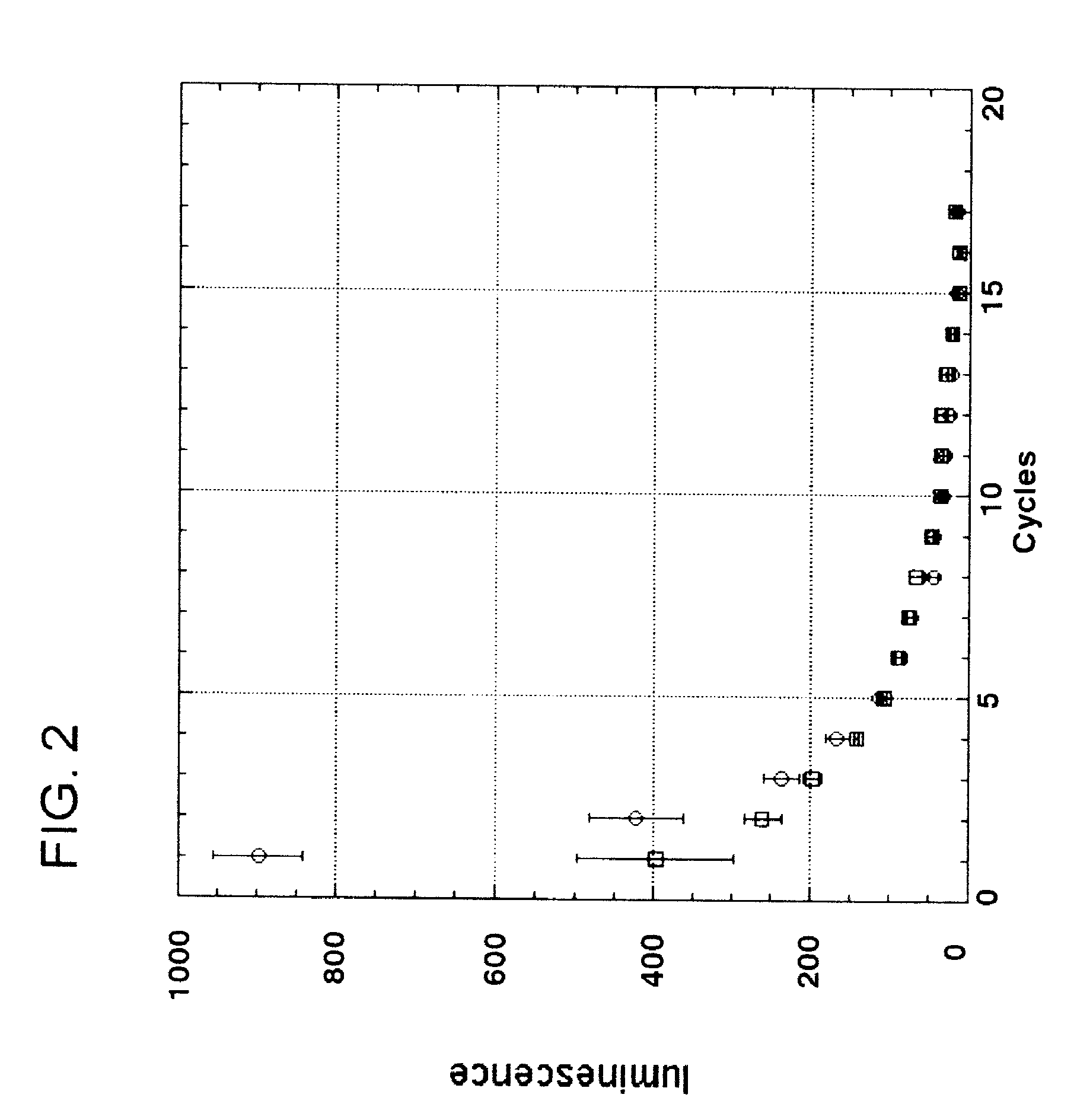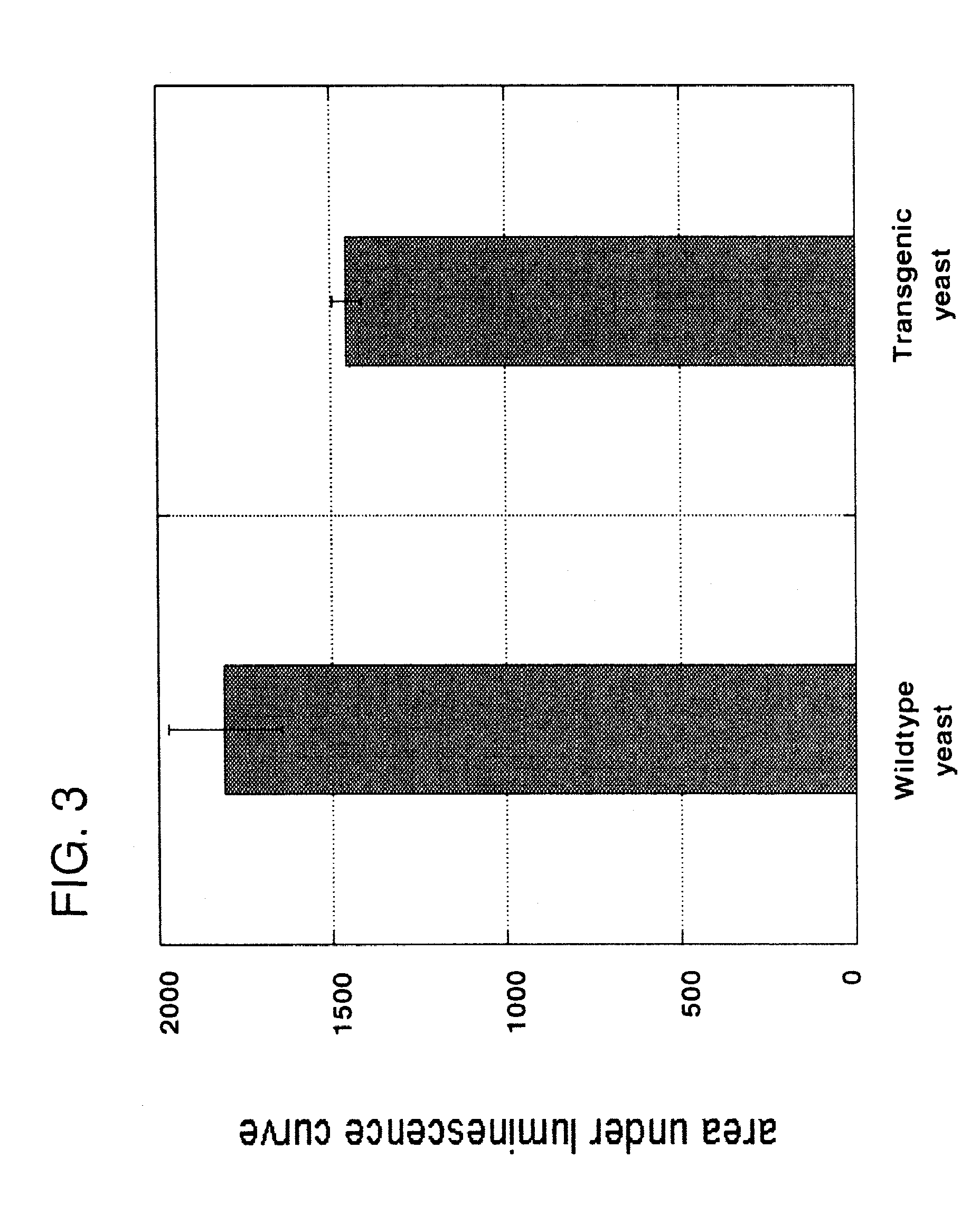Bacteriophage derived methods to control lactic acid bacterial growth
a technology of lactic acid bacteria and derived methods, which is applied in the field of new antibacterial proteins and nucleic acid sequences, can solve the problems of environmental sensitive expression of antibacterial proteins, and achieve the effect of reducing or eliminating bacterial contamination
- Summary
- Abstract
- Description
- Claims
- Application Information
AI Technical Summary
Benefits of technology
Problems solved by technology
Method used
Image
Examples
example 1
Generation of Antibacterial Proteins
[0099]The amino acid sequences of the APs were designed based on multiple alignments of bacteriophage genes. There are four families of lysin catalytic domains found in enzymes of Lactobacillaceae specific bacteriophages. At least one AP of the invention was derived from each of the four families of catalytic domains.
[0100]The amino acid sequences were derived from between 8 and 20 full-length protein sequences containing catalytic domains, obtained from the public domain PFAM database. Each sequence was truncated from the caroboxy terminus so that only the catalytic domain sequence remained. If the sequence contained a bacterial secretion leader sequence, it was also truncated from the catalytic domain. The catalytic domain sequence sets were computationally aligned using a dynamic programming implementation of the ClustalW algorithm in the licensed software package CLC Combined Workbench (CLC bio) with default settings (FIGS. 6, 8, and 10). The ...
example 2
[0103]Nisin is an antibacterial bacteriocin substance that is secreted by some strains of Lactococcus lactis (L. lactis) bacteria. Nisin A (or nisin Z, which differs by a single amino acid from nisin A) is synthesized as a precursor peptide but then undergoes extensive, covalent, enzymatic modification to become an antibiotic molecule. The antibiotic final form of nisin is secreted by L. lactis to kill competing lactic acid bacteria in their local environment. Nisin is a commercial product used widely in the food and beverage industries. It has Generally Regarded As Safe (GRAS) status under US FDA regulations.
[0104]To demonstrate proof of principle for the use of bacteriocins secreted by genetically engineered yeast in protecting against bacterial contamination, the nisin A gene was cloned into the genome of the yeast Kluyveromyces lactis. Because yeast do not have the enzymes necessary to convert nisin peptide into the antibiotic chemical form, it was not ant...
example 3
General Cloning and Expression of AP Proteins
[0106]The antibacterial proteins of the invention were cloned into a yeast expression system and analyzed for antibacterial activity. The commercial yeast expression system (New England Biolabs) for Kluyveromyces lactis with the pKLAC1 shuttle vector was used. An AP to be expressed was cloned into the multiple cloning site of the pKLAC1 plasmid at the XhoI and BGLII restriction sites. The AP codons were placed in frame with both the KEX protease recognition site (amino acids lysine-arginine) and the preceding alpha mating factor secretion peptide so that the yeast would correctly process and secrete the AP. After cloning the AP gene into pKLAC1 in frame, the plasmid was amplified in E. coli host cells using ampicillin selection. Extracted plasmid was then linearized with the restriction enzyme SacII, which exposed the DNA sequence homologous with the K. lactis LAC4 at both the 5 prime and 3 prime termini of the vector. Specifically, 2 μg ...
PUM
| Property | Measurement | Unit |
|---|---|---|
| molecular weight | aaaaa | aaaaa |
| molecular weight | aaaaa | aaaaa |
| molecular weight | aaaaa | aaaaa |
Abstract
Description
Claims
Application Information
 Login to View More
Login to View More - R&D
- Intellectual Property
- Life Sciences
- Materials
- Tech Scout
- Unparalleled Data Quality
- Higher Quality Content
- 60% Fewer Hallucinations
Browse by: Latest US Patents, China's latest patents, Technical Efficacy Thesaurus, Application Domain, Technology Topic, Popular Technical Reports.
© 2025 PatSnap. All rights reserved.Legal|Privacy policy|Modern Slavery Act Transparency Statement|Sitemap|About US| Contact US: help@patsnap.com



